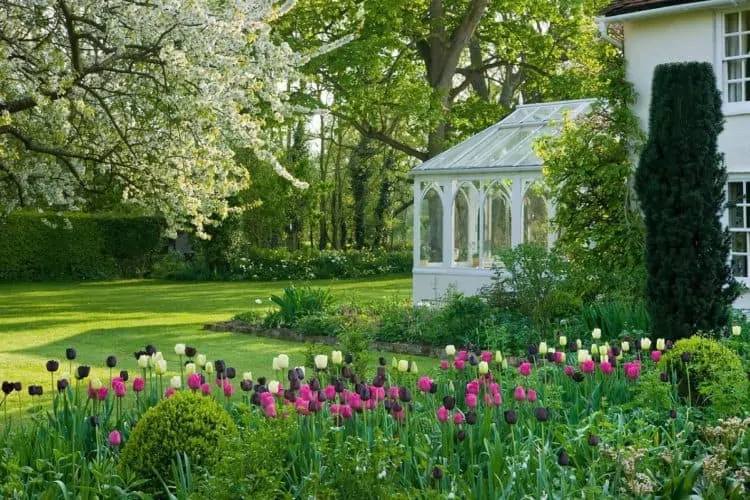
What Is a Casita?
As you begin or move down your path towards retirement, you may consider building a casita for your house. In Spanish, casita is translated as “tiny house,” and it denotes the little additional suite that comes with a single-family home. Such an extra space can be extremely useful if you have family who needs a place to stay or wish to host guests for an extended period of time while still giving them a sense of luxury and privacy. Sometimes referred to as additional dwelling units, these separate abodes grant you an ability to host friends and loved ones without feeling as if you are filling up one another’s space.
So, do you know what is a casita in a home setting? If you are from the Southwest, then you are probably acutely aware of the term casita as it relates to homes. They are popular enough that many homes in the region will come with a casita, or developers in adult communities may offer models with a casita option. In most cases, casitas are disconnected from the main house and situated on the back part of the property. In warmer areas where pools are common, the casita is often times referred to as the pool house. Regardless of where you are from, building a guest house is a worthwhile investment that not only makes it easier to host guests but also gives you the option to make money by renting them out and utilizing a part of your property that otherwise would go unused. Because Casitas are so versatile, they can be fine-tuned to fit any property and serve as a valuable home improvement project as a result.
Before you dive in though, it is essential that you are aware of the costs and benefits of building a casita. In this article, we will delve into those topics and give tips for building your very own casita.
Characteristics of a Casita
Casitas are self-contained units that are generally built on a residential property in addition to or alongside a single-family home. Typically, a casita can be erected as a supplement to the main house or in the side yard or backyard. The original casitas from the 1920’s were a simple lodging space for migrant laborers, so as you might imagine, they were spartan in their design and accommodations. These days, however, casitas retain their small stature, but now offer a plethora of guest house layout design options, innovative features, and accommodations tailor-made for the desired occupant. Whether you want to host your in-laws, your older children, rent it out, or utilize that space as an office or a “man cave,” a casita can be custom fitted to your exact specifications. The trend of people building micro homes shows that a small space is only as limited as the imagination of the designer of the area.
Although, in most cases, a casita is intended to be a detached dwelling unit, there are some casitas that are attached living quarters supplemental to the main home. What with the trend of multigenerational housing becoming more commonplace once more, the demand for additional, granny flats for older children or elderly parents is also increasing.
The rule of thumb for determining the size of a casita is it should be no larger than 1200 square feet or half the size of the original home, whichever is smaller. As mentioned, some designs are minimalistic and compact, while others can be quite spacious including a bedroom, a bathroom, a separate living room, and kitchen area. The flexibility of this space should be ideal accommodations for one person or a young couple. For those simply looking for additional space, and a place to put a pull-out when guests come, a casita can be turned into an office, a music studio, or a game room.
Planning the Build
While you may feel inclined to just dive right into the construction aspect of your casita, it is essential that you and your team thoroughly plan out this stage. If you jump in blindly, without having a solid understanding of what you want, what you need, and what fits into your budget, this can lead to mistakes, higher building costs, and could leave you unhappy in the end. Few things are worse than dumping thousands of dollars into a project only to wind up unsatisfied and looking to change it all once more.
Before you begin, discuss with your loved ones and create a list of everything you regularly do in your home on a daily basis. Ask yourself the following question:
- What is your budget? – Casitas, especially those with bathrooms and kitchens, are not cheap builds. While they can be done in a cost-effective manner, an additional dwelling unit typically costs anywhere from $100 – $500 per square foot just for construction. This square footage cost does not account for the additional tens of thousands for permits, foundation, and installation. The cost of a casita can be a substantial investment, and there may be features you want but find out mid-build that you cannot afford them. Before you ever begin, you should obtain a detailed estimate of the total costs of construction and make sure you have room in your budget for more than that figure.
- Consider Legal Logistics – Rules for casitas will naturally vary by region, county, and state. It is vital that you know your city’s zoning and building laws. When building a casita, you still must submit plans, obtain permits, abide by regulations, and incorporate standards that address waterlines, sewer lines, and fire safety. While your contractor should be aware of these, it is best that you do your due diligence as well. Further, if you are in a newly built community, or have a homeowner’s association, casitas may not be allowed to be made.
- Who is this space for? – If it is for your parents in their old age, you may need to build special accommodations or safety features. If they have disabilities, you may desire to have features such as ramps, wide hallways or bathrooms. If it is a temporary solution for your child out of college and then meant to be rented afterward, consider how that will change the features you desire. If it is to be meant as an additional room, office, or music studio, then perhaps a kitchen is not necessary.
- What is the purpose of this space? – If you want to make it a music studio, then maybe it will need special soundproof walls. If you’re going to rent it out as a way to make money, then perhaps it would be best if it was detached from the house, and had its own entrance, bathroom, kitchen, etc. If it is only meant for visitors, then a full kitchen is an unnecessary addition. While such a room can obviously be multipurpose, it is best to have a solid idea of the reason why you are adding the space, rather than simply adding it.
- What are your favorite features of your home? – What space do you utilize the most in your home right now, where do you spend time with family, where do you eat? Think about ways you can incorporate these things into this new space.
- What are your least favorite features of your home? – What about your house do you not like, or features do you not fully utilize? Consider ways you can avoid falling into the same traps of your current home. If you find your house does not have enough natural light, you can remedy this by making sure it is not an issue with the new space.
- What is the exterior and interior design of your home? – Although a casita does not necessarily have to match the interior and exterior of your home, having similar décor grants a feeling of continuity and class to the additional unit. It gives a sense of planning involved that does not make it seem like the project was a tacked on or cheap addition. This is especially important if you ever wish to put your home on the market since it will affect the value of the house and may turn off potential buyers if the property seems discordant.
- Where is the sunlight coming from? – While this may not seem like a big deal, understanding how much natural lighting the space gets is absolutely critical for determining the interior design. Perhaps you want your guests to be able to watch the sunset from the front of the casita. If so, the front needs to be situated to the east. Depending on where the sun is shining on the structure, there will naturally be areas of the casita that are low on sunlight.
- What type of floor plan do you want? –Consider how you like to enter the house and store your shoes and coat. Think about when you are cooking, where do you like things to be? How much storage space or cabinet space do you need? Where do you want the bed? Do you want the room to have a view? A deck and hangout area? You should discuss and know how you want the space to feel and function. Your interior designer or architect can help you come up with a flow and design that is ideally suited to how you wish to utilize this space. There are also a variety of pre-designs available that you can select from in order to find one ideal for your goals and budget.
Casita Construction Steps
Once you have approved the design and budget, it is time to build.
Step 1: The Paperwork – Once the ball gets rolling, you have to submit all the paperwork about the casita to the city to receive approval and begin construction. This stage requires patience since, as with all things bureaucratic, it takes time. Plan for this waiting period to take at least twenty days, if not significantly longer. If given approval, you will be required to inform your neighbors of your desire to build a casita.
Step 2: Site Clear – After the paperwork is approved, the real work on the casita begins. This starts with a site prep whereby those working on the build clear the area of debris and obstacles that may impede the construction. If there are existing structures, they will require removal, but its best to do this beforehand since demolition is not typically included in pricing.
Step 3: Slabbing the Foundation – After the site is clear for construction, surveyors mark the boundaries of the casita. If any excavation is needed, it will occur at this stage. Then the framework for the building is laid with the pouring of the supportive slab and the erection of piers. At this point, you will already begin to see the framework for what the casita will look like. This framework will typically involve termite proofing as well.
Step 4: Erecting the Frame – The frame of the casita is erected as well as the internal and external bearings. At this stage, you will see the skeleton of the casita and be able to distinguish the various areas from one another.
Step 5: Enclosing the Casita – At this stage, the vertical roof and guttering are installed, enclosing the structure and protecting it from the elements. While it is still not finished, this will be the first time you get a solid feeling for what the space will end up looking like and can begin planning the aesthetics of the yard and exterior.
Step 6: Utilities – Now that the structure is covered the interior work truly begins. This starts with lining the walls with insulation and plasterboard mounting. Installation of the main utilities such as the electrical systems and plumbing will also take place during this stage.
Step 7: Kitchen – At this point, the kitchen appliances, cabinets, and storage are installed.
Step 8: Flooring – The final stage of the project involves tiling, flooring, painting and adding or fitting any other accessories. If you choose to use a carpet, it will be installed at this time.











